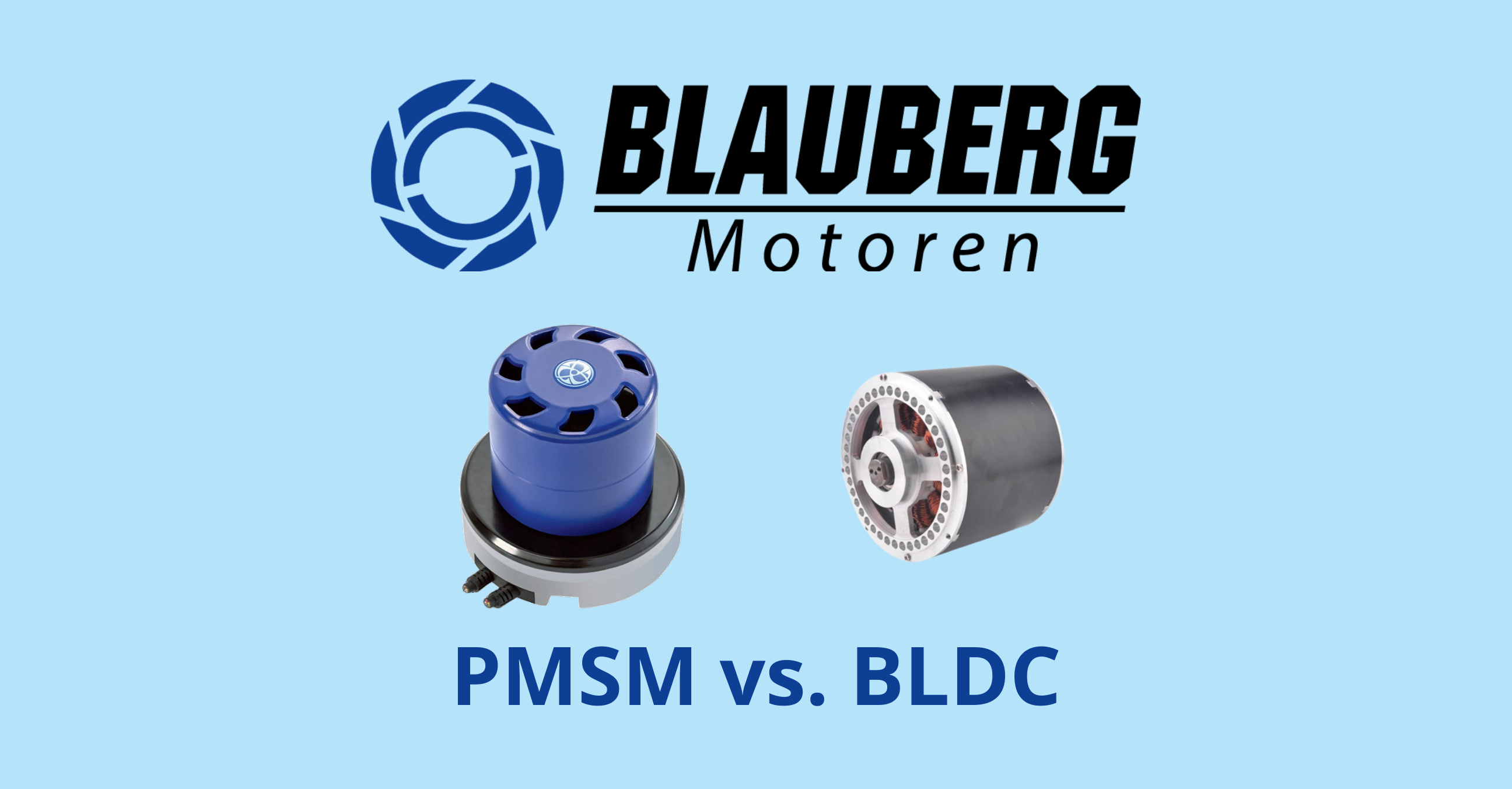HQ Tel. +49(0)89-235-16-801
US Tel. +1 765-780-7139

Dear friends, today we propose to review BLDC and PMS motors (PMSM) and understand the difference between them, so let's go!
To begin with, let's take a look at each of them separately, and the first in line is the Brushless DC motor (BLDC motor):
Pic. 1 – BLDC motor structure
A BLDC motor is an upgraded version of a brushed DC Motor. The absence of brushes gives BLDC motors the ability to rotate at high-speed and increased efficiency.
Construction of the BLDC motor says that the permanent magnet acts as a rotating part of the motor called the rotor & the stationary part of the motor is made of coil windings called the stator. The BLDC motor is working on the Lorentz principle which states that whenever we place a current-carrying conductor in a magnetic field it experiences a force. The current-carrying conductor is the stator’s coil so the PM rotor experiences force and starts rotating. Stator windings in a trapezoidal manner so DC current is required to run the motor. Hence, the motor will generate trapezoidal back electromotive force (EMF) & produce torque repulsion.
Pic. 2 – PMSM vs. BLDC diagrams
Permanent Magnet Synchronous Motor (PMSM):
Moving on to the PMSM, it can be seen as an AC counterpart of the Brushless DC motor.
PMSM also comprises a permanent magnet as a Rotor and a Stator with a Coil wound over it. Blauberg Motoren EC motors are classified as PMSM.
Pic. 3 – PMSM structure
The working principle of PMSM is the same as a synchronous motor, when stator windings are energized, a rotating magnetic field is produced & EMF created rotor is affected by this force and starts rotating at synchronous speed.
The difference is the coil wound over the stator and it is in a sinusoidal manner. So, AC current is required to run the motor. Hence, the motor will generate sinusoidal back EMF & produce low torque repulsion.
Due to low torque repulsion, PMSM got higher and smooth torque with higher efficiency and low noise compared to BLDC motor. PMSM has a higher power density, which will help in reducing the size of the motor. That’s why PMSM is better than BLDC motors in terms of performance.
So, let's summarize:
Differences in design and operating principles:
BLDC motors: Characterized by a three-phase stator and a permanent magnet attached to the rotor, BLDC motors generate torque by means of a six-step sequence of current delivery to the stator.
PMSM: With the same configuration of a three-phase stator and rotor magnet, PMSM, unlike BLDC, uses a sinusoidal power supply to generate torque.
Various output current profiles:
BLDC motors: Output a rectangular (or trapezoidal) current profile.
PMSM: Displays a sinusoidal current profile, which contributes to smoother performance.
Long life, reliability, and application options:
BLDC and PMSM have a long service life due to the absence of mechanical brushes.
BLDC motors: Find a niche in industries requiring high speeds and moderate control accuracy, such as fans and pumps.
PMSM: Ideal for applications requiring high control accuracy and high power density. They have proven themselves in the automotive, aerospace, and other industries that require high precision.
Efficiency analysis:
BLDC motors: Demonstrate commendable efficiency at higher speeds.
PMSM: Typically demonstrate high efficiency at low speeds and maintain it flawlessly even at high speeds.
Control dynamics:
BLDC motors: Often considered easier to control because they do not depend on a sinusoidal power supply.
PMSM: Can incorporate more complicated control techniques, especially when integrated with a sine wave driver.
Essentially, both BLDC and PMSM have distinct advantages and disadvantages. The optimal choice between these two motor types depends on the specific application and the unique features of your system, and we can assure you that PMS motors from Blauberg Motoren are the right and best choice!
Follow our news: